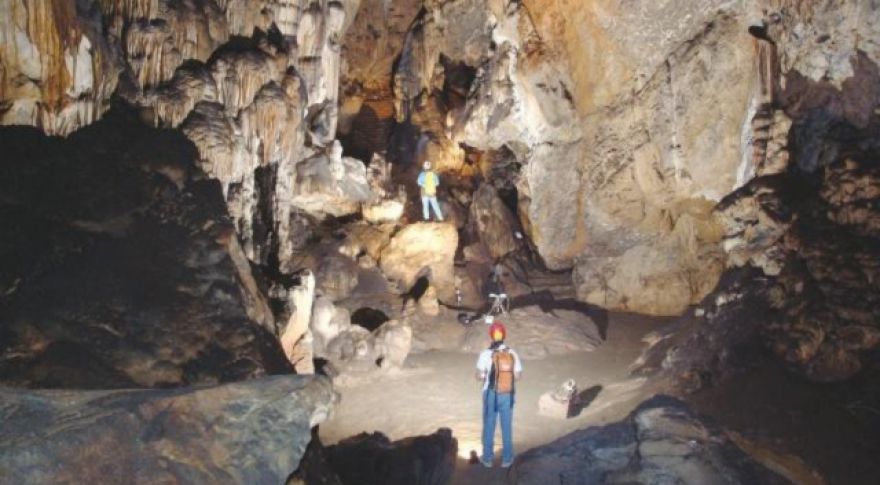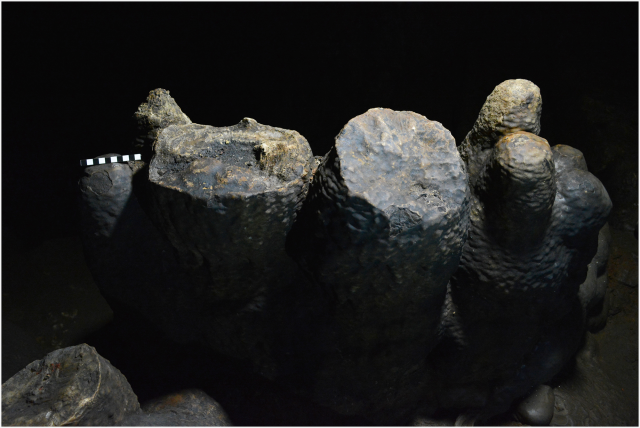
Researchers Uncover Details of a 58,000-Year-Old Art Studio
Now radiometric data garnered from excavated samples have offered researchers the clues necessary to piece together the chronology of the cavernous “art studio.

Charcoal-capped stalagmites imply that some humans created DIY stationary lamps to see what they were painting. (Photo: José Ramos-Muñoz et al/PLoS One)
The results of the AMS procedures revealed that Cueva de Ardales was occupied sporadically, resulting in artistic contribution from humans across two separate points in history. The 58,000-year-old cave was first enjoyed by Neanderthals during the Middle Paleolithic era, when the use of fire by early humans was finally becoming common. “Anatomically modern” humans then rediscovered the cave during the Neolithic period, when humans first began taking up farming. The archaologists, whose was published this week in the journal PLoS One, emphasize that the cave was not used as a campsite, but rather “visited to carry out non-domestic tasks, such as the production of rock art or the burial of the dead.”
While those non-figurative paintings were found toward the cave’s entrance, paintings depicting humans and animals were found deeper inside, where natural light wouldn’t have illuminated the artists’ stone canvases. The humans responsible for these works appear to have used some of the cave’s stalagmites as stationary lamps, according to charcoal caps found on some of the stalagmites deep within the cave.
The archaeologists estimate that there’s more art to be discovered, thanks to parts of the cave left completely untouched by explorers over the last several hundred years.
Now Read: